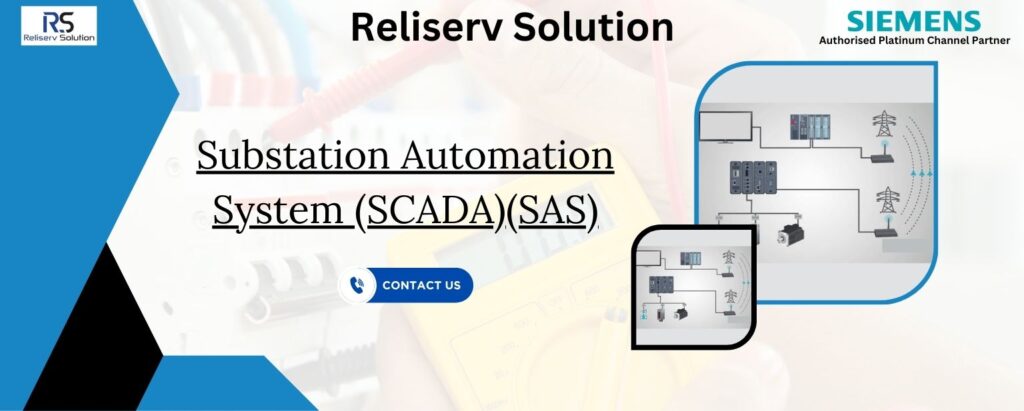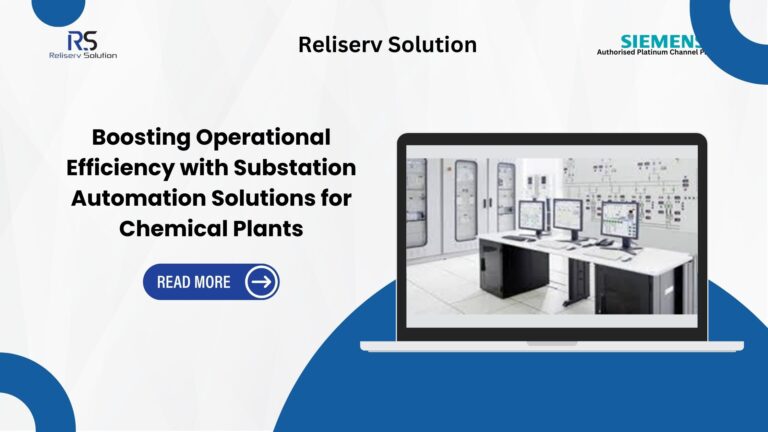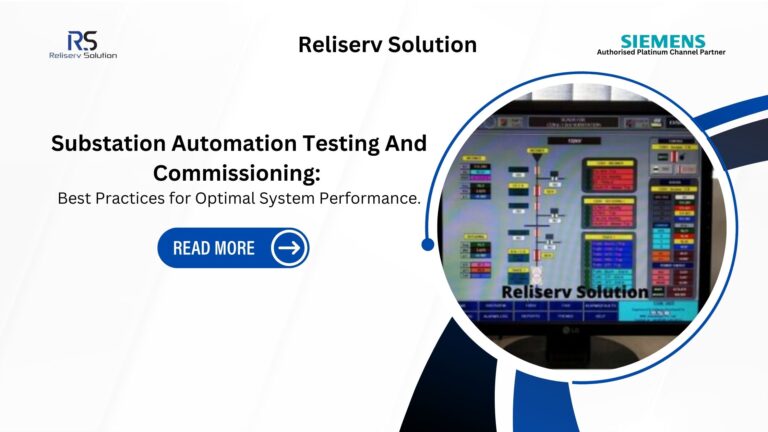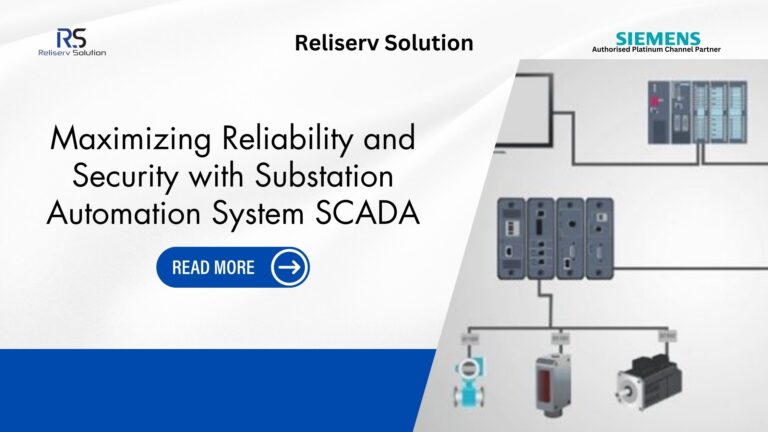In the realm of modern automation, the integration of technology into the management of electrical power systems has revolutionized the way we approach energy distribution and reliability. Substation Automation Systems (SAS) and Supervisory Control and Data Acquisition (SCADA) are at the forefront of this technological advancement. Together, they form a robust framework that enhances the efficiency, reliability, and safety of power distribution networks.
In this blog, we will delve into the pivotal role of Substation Automation System SCADA in modern automation. However, exploring its key components, benefits, and applications. We’ll highlight the transformative impact of SAS SCADA on power systems and its contribution to the future of energy management.
An Overview of the Substation Automation System SCADA
Substation Automation System SCADA represents a significant leap forward from traditional substation management methods. By utilizing advanced computer systems, communication networks, and intelligent electronic devices (IEDs), SAS SCADA enables real-time monitoring, control, and automation of substations. This integration streamlines operations and ensures the seamless distribution of electrical power, minimizing downtime and improving overall grid performance.
We offer SAS and SCADA (Substation Automation System) solutions using cutting-edge. Contemporary technology includes a range of connection protocols. e.g., Modbus, IEC103, IEC104, IEC61850, 1.101. OPC, Modbus TCP/IP, etc. Automation of Substations: System Architecture.
We provide substation HMI and SCADA solutions based on PC and operator panel engineering and development. Process, power, and switchyard plants.
Services Offered:
- Monitoring and controlling the current substation by using RTUs or gateways to gather input, output, and analog data points.
- Setting up centralized control and monitoring of several main stations and substations to enhance reliability and quality.
- RTU and local monitoring system installation is upgrading the current outdated station. Batteries and DCPS for the new RTU panels.
- Linking field signals to RTU and sending them to the master control center in order to initiate the new SCADA system’s online launch.
- Creating engineering papers in PDF and CAD format, including SLD, control room layout, BOM, I/O list, cable schedule, and adaption.
- Panel assembly, cabling installation, and termination for both new and existing substations.
- Setting up, testing, and commissioning the RTU as well as getting the customer to sign a SAT certificate.
Key Components of Substation Automation System SCADA
- Intelligent Electronic Devices (IEDs): IEDs are crucial components of SCADA Automation Service Provider. Additionally, providing real-time data acquisition, monitoring, and control functionalities. These devices include protective relays, circuit breakers, meters, and controllers that communicate with the SCADA system. Consequently, to relay critical information about the substation’s status and performance.
- Communication Networks: Robust and reliable communication networks are essential for seamless operation including SCADA Automation Service Provider. These networks facilitate the transfer of data between IEDs, central control systems, and human-machine interfaces (HMIs). Common communication protocols used in SAS SCADA include IEC 61850, DNP3, and Modbus including SCADA Automation Service Provider.
- Human-Machine Interface (HMI): The HMI is the interface through which operators interact with the SCADA system even for SCADA Automation Service Providers. It provides graphical representations of the substation, real-time data visualization, and control functionalities. The HMI enables operators to monitor substation parameters, identify issues, and make informed decisions.
- Central Control System: The central control system is the brain of the SAS SCADA, processing data from IEDs and communication networks to provide real-time monitoring and control of the substation considering the SCADA Automation Service Provider. It includes servers, databases, and software applications that analyze data, generate alarms, and facilitate automated control actions.
Benefits of Substation Automation System SCADA
- Enhanced Reliability and Availability: SAS SCADA systems significantly improve the reliability and availability of power distribution networks. These systems can quickly detect and respond to faults by enabling real-time monitoring, and control, minimizing downtime, and preventing widespread outages.
- Improved Operational Efficiency: Automation of substation operations reduces the need for manual interventions, leading to increased operational efficiency. SCADA Automation System in Mumbai can perform routine tasks such as switching operations, load balancing, and fault isolation automatically. However, freeing up human resources for more critical activities.
- Real-Time Monitoring and Control: The real-time monitoring of substations offered by the SCADA Automation System in Mumbai is one of its biggest benefits. Operators can make quick judgments and quickly address issues by having access to real-time data on a variety of substation factors.
- Enhanced Safety: By automating critical substation operations and providing real-time data. The SCADA Automation System in Mumbai enhances the safety of both personnel and equipment. Automated fault detection and isolation reduce the risk of electrical hazards, while real-time monitoring ensures that potential issues are identified and addressed before they escalate.
- Cost Savings: Implementing the SCADA Automation System in Mumbai can lead to significant cost savings for utilities. Improved reliability and reduced downtime result in lower maintenance and repair costs, while increased operational efficiency reduces the need for manual labor.
- Scalability and Flexibility: SCADA Automation System in Mumbai are highly scalable and flexible, allowing utilities to expand and adapt their infrastructure as needed.

Applications of Substation Automation System SCADA
- Power Distribution Networks: SCADA Automation systems are widely used in power distribution networks to enhance the reliability and efficiency of electrical power delivery. By providing real-time monitoring and control, these systems ensure that power is distributed efficiently and that any issues are quickly identified and addressed.
- Renewable Energy Integration: The integration of renewable energy sources, such as solar and wind power, into the grid requires advanced monitoring and control capabilities. SAS SCADA systems play a vital role in managing the variability and intermittency of renewable energy sources, ensuring a stable and reliable power supply.
- Smart Grids: Smart grids leverage advanced communication and automation technologies to optimize the generation, distribution, and consumption of electricity.
- Industrial Automation: In industrial settings, SCADA Automation systems are used to monitor and control complex electrical systems, ensuring reliable power delivery and minimizing downtime. These systems are essential for industries that rely on continuous and reliable power, such as manufacturing, mining, and oil and gas.
The Transformative Impact of SAS SCADA on Power Systems
The adoption of SAS SCADA systems has transformed power systems, leading to numerous benefits and advancements. By enabling real-time monitoring and control, these systems have significantly improved the reliability and efficiency of power distribution networks. The automation of substation operations has reduced the need for manual interventions, leading to increased operational efficiency and cost savings.
Conclusion
In conclusion, the Substation Automation System SCADA is a cornerstone of modern automation in the electrical power industry. Its ability to provide real-time monitoring, control, and automation of substations has revolutionized power distribution networks, enhancing their reliability, efficiency, and safety. The key components of SAS SCADA, including IEDs, communication networks, HMIs, and central control systems, work together to create a robust and scalable solution for managing substations.
The benefits of SAS SCADA are far-reaching, from improved reliability and operational efficiency to enhanced safety and cost savings. Its applications span power distribution networks, renewable energy integration, smart grids, and industrial automation, highlighting its versatility and importance in various sectors.
As the demand for reliable and efficient power continues to grow, the role of SAS SCADA in modern automation will become increasingly critical. By embracing this advanced technology, utilities and industries can ensure a stable and sustainable power supply, paving the way for a brighter and more efficient future.
Based in Mumbai, Maharashtra, Reliserv Solution is both an Authorized supplier and a Platinum Channel Partner of Siemens. Our specialist services and solutions are also beneficial to other industries, such as panel builders. If you need help or have any questions, please email us at [email protected] or give us a call at +917506112097. Click here to see our Automation Solutions that are currently offered. Over the years, in addition to our well-known Substation Automation System SCADA, we have provided a wide range of other solutions.



